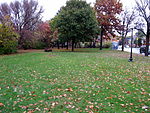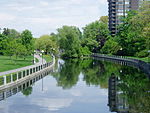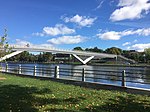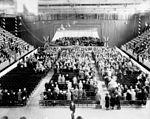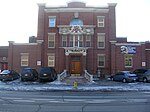The Canadian Museum of Nature (French: Musée canadien de la nature; CMN) is a national natural history museum based in Canada's National Capital Region. The museum's exhibitions and public programs are housed in the Victoria Memorial Museum Building, a 18,910 square metres (203,500 sq ft) structure in Ottawa, Ontario. The museum's administrative offices and scientific centres are housed at a separate location, the Natural Heritage Campus, in Gatineau, Quebec.
The museum originated from a museum established by the Geological Survey of Canada in 1856. Originally based in Montreal, the museum relocated to downtown Ottawa in 1881. In 1911, the museum relocated to Victoria Memorial Museum Building. Initially, a natural history museum, the institution later expanded to include an anthropology and human history department; with the institution renamed the National Museum of Canada in 1927. The departments of the national museum were later split into separate national institutions, with the natural history department forming the National Museum of Natural Sciences in 1968. The museum adopted its current name in 1990 after it was made its own autonomous crown corporation. From 2004 to 2010 the museum renovated and expanded the Victoria Memorial Museum Building.
The museum's collection contains over 14.6 million specimens relating to the natural world, several of which are displayed in the museum's permanent exhibitions. The museum also hosts and organizes several travelling exhibitions, as well as support and conducts several research programs relating to natural history.


